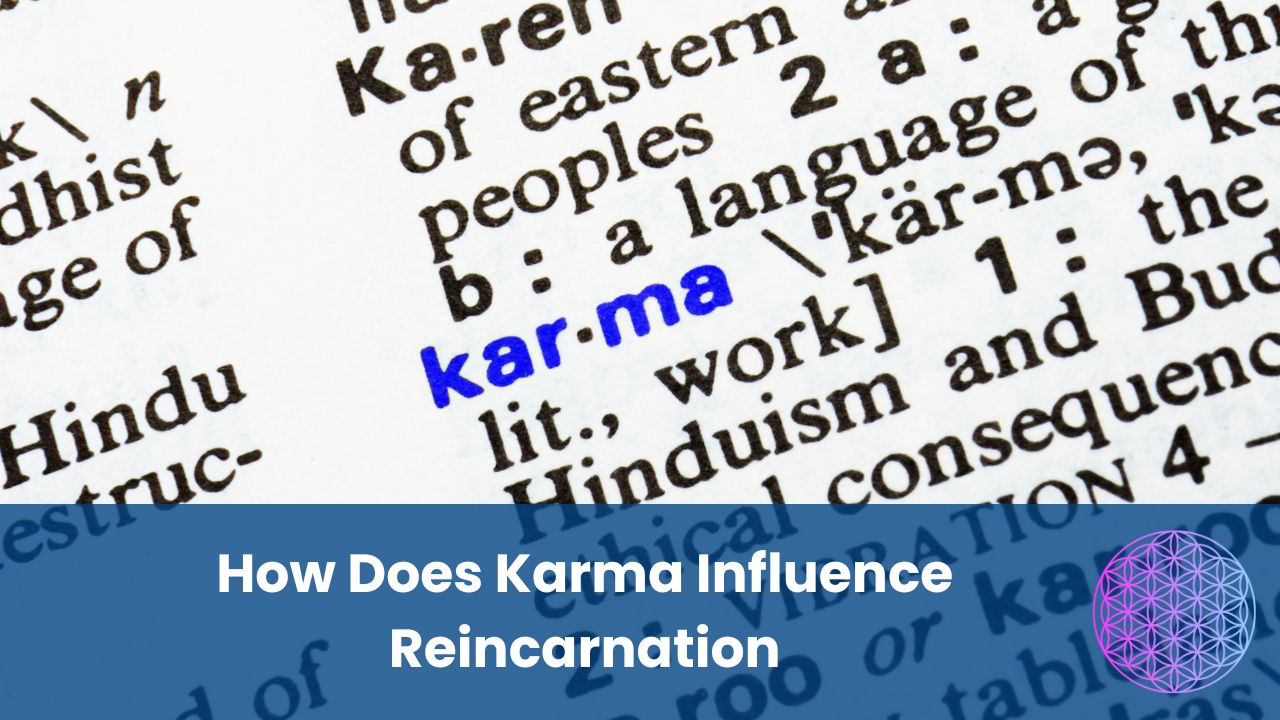Karma, the cosmic principle of cause and effect, intricately weaves its influence on the cycle of reincarnation. Understanding the profound ways karma directly impacts the process of rebirth is essential for those seeking to delve deeper into the mysteries of existence.
By exploring four key facets of this intricate connection – the Law of Cause and Effect, the Cycle of Birth and Death, Balancing Actions and Consequences, and Shaping Future Life Experiences – we can gain invaluable insights into the profound implications of karma on the journey of reincarnation.
Table of Contents
- The Law of Cause and Effect
- The Cycle of Birth and Death
- Balancing Actions and Consequences
- Shaping Future Life Experiences
- Breaking the Cycle of Samsara
- Conclusion
The Law of Cause and Effect
The Law of Cause and Effect governs every aspect of reincarnation, ensuring that every action has a corresponding consequence. This concept of karmic accountability is central to understanding the intricacies of past life connections.
According to this law, our actions in previous lives directly impact our current and future circumstances. Positive actions result in positive outcomes, while negative actions lead to negative consequences. It is believed that the consequences of our actions may not be immediate, but they will inevitably manifest, either in this lifetime or future incarnations.
This understanding of cause and effect encourages individuals to take responsibility for their actions and strive for positive change. By acknowledging the karmic accountability within the cycle of reincarnation, individuals can work towards resolving past life connections and creating a more harmonious existence.
The Cycle of Birth and Death
One significant aspect of the Law of Cause and Effect is the perpetual cycle of birth and death. Reincarnation and spiritual growth are deeply intertwined with this cycle, as individuals continue to be reborn to learn and evolve spiritually. Understanding the purpose of this cycle is essential for those seeking a sense of belonging and fulfillment in their spiritual journey.
The cycle of birth and death can be seen as a continuous process of learning and growth. Each lifetime offers new opportunities for individuals to experience different circumstances, learn important lessons, and make progress in their spiritual development. The following table illustrates the key aspects of the cycle of birth and death:
| Aspect | Description | Purpose |
|---|---|---|
| Birth | The beginning of a new life | To provide opportunities for spiritual growth |
| Life | The experiences, challenges, and lessons of an individual’s journey | To learn and evolve spiritually |
| Death | The end of a physical existence | To transition to a different state of being and continue the spiritual journey |
Balancing Actions and Consequences
As individuals navigate the cycle of birth and death, they must confront the profound impact of karma on their reincarnation journey. Balancing actions and consequences is essential to understanding karmic patterns and managing karmic debt.
Exploring karmic patterns involves recognizing the cause-and-effect nature of actions, where every action creates a ripple effect that influences future experiences. This understanding compels individuals to take responsibility for their actions, knowing they will ultimately face the consequences.
Individuals can actively work towards resolving their karmic debts by balancing actions and consequences. This process requires self-reflection, introspection, and a commitment to personal growth. It involves acknowledging and learning from past mistakes, making amends, and actively making positive choices to create a more positive karmic balance.
Through this process, individuals can gradually free themselves from the cycle of birth and death and attain spiritual liberation.
Shaping Future Life Experiences
Navigating the cycle of birth and death, individuals must recognize that karma is pivotal in shaping their future life experiences. Karmic patterns, formed by the actions and choices made in previous lives, create a blueprint that influences the course of one’s existence.
While destiny and free will coexist, karma is a guiding force determining the opportunities and challenges one encounters. Individuals shape their future circumstances through the accumulation and resolution of karma. Positive actions lead to positive outcomes, while negative actions result in negative consequences.
Breaking the Cycle of Samsara
To break the cycle of Samsara, individuals must actively seek liberation by resolving their karmic debts.
Samsara refers to the continuous cycle of birth, death, and rebirth in Hinduism and Buddhism. This cycle is believed to be perpetuated by karma, the law of cause and effect.
Breaking free from Samsara requires individuals to liberate themselves from the suffering inherent in this cycle. This liberation can be achieved through spiritual enlightenment, which involves gaining insight into reality’s true nature and transcending the physical world’s limitations.
Conclusion
In conclusion, karma plays a significant role in the cycle of reincarnation. The law of cause and effect governs the balance of actions and consequences.
Through karma, individuals shape their future life experiences, either perpetuating the cycle of birth and death or breaking free from it.
Like a thread weaving through the tapestry of existence, karma connects past, present, and future, influencing the paths we traverse in the eternal journey of Samsara.

Rachel Howard
About The AuthorRachel Howard is the visionary voice behind ManifestPositivity.com, a sanctuary for those eager to tap into the limitless potential of the mind and the cosmos. Rachel and her team are dedicated to unraveling and disseminating the transformative principles that dictate our existence, such as the Law of Attraction, the Law of Abundance, and more.







